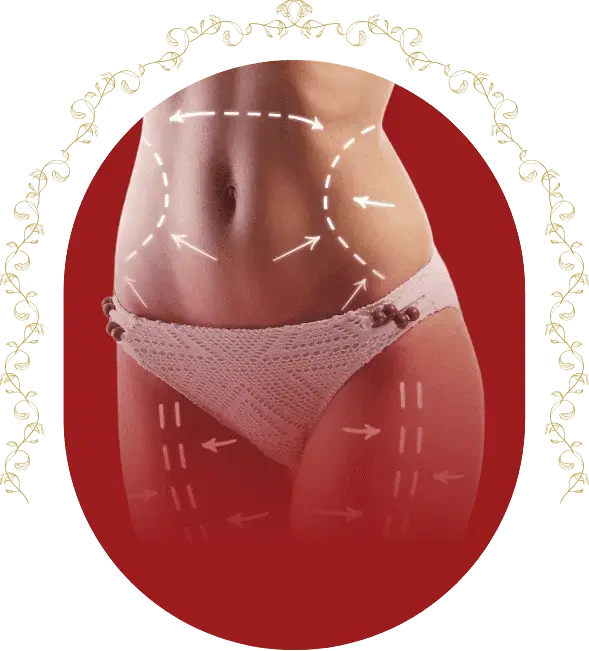Gender Reassignment
Gender reassignment refers to the process that’s executed when an individual feels like the gender in which they took birth doesn't align with the identity that they feel for themselves. It is a medical condition that is also known as gender dysphoria.
This is where an individual takes the decision of getting a gender reassignment for themselves.
Gender reassignment is a term that can be used to refer to those individuals who have done or are looking for either of the two:
- Not looking to undergo any kind of medical treatment but wish to live in
a different gender permanently, which differs from their birth
gender. - Have undergone, are looking to, or are already undergoing medical
treatment for gender reassignment.
What is Gender Reassignment Surgery?
Gender reassignment, or gender affirmation surgery, refers to a set of procedures that allow people to change their genders. Gender reaffirming options could be top surgery, bottom surgery, or facial surgery.
Most individuals undergoing this surgery have shown good levels of satisfaction with their results, where they are at ease by how their body looks physically and that their quality of life has also improved post this procedure.
What is the Need for a Gender Reassignment Surgery?
“Coming out” is a term that’s often used when it comes to telling people about an individual’s orientation. It can be considered as more of a transition, if you’re nonbinary, transgender, or even gender diverse, for that matter.
There are surgeries through which you can:
- Enhance or reduce the physical characteristics that pertain to the
assignment of female gender at birth (AFAB). - Enhance or reduce the physical characteristics that pertain to the
assignment of male gender at birth (AMAB). - Change the appearance of your genitals.
Nonsurgical Gender Reassignment Procedures
There are many nonsurgical gender reassignment procedures, which include:
- Masculine hormonal therapy:
The therapy increases the masculine characteristics like facial hair,
deeper voice, and increased muscle mass. - Feminine hormonal therapy:
This therapy increases the feminine characteristics like higher voice
pitch, rounded hips, and bigger breasts. - Voice Therapy: This procedure teaches communication and speaking skills which allow you
to express your gender. - Laser Hair Removal: To remove facial or body hair.
- Puberty Blocking: This procedure delays the development of secondary characters
usually developing during puberty. The instances can be changes in face
structure, facial hair, and breast growth.
What are the Types of Gender Reassignment Surgery?
When it comes to gender reassignment surgery, the types include:
- Vocal surgery that brings a change in your voice pitch.
- Facial reconstructive surgery for making the facial features more
masculine or feminine. - Genital surgery for reconstructing the genitals.
- Chest surgery for removing the breast tissue for either a more masculine
appearance or enhancing the breast size to enhance the feminine
appearance.
Surgery for People with AMAB
Instances for surgery in the context of people with AMAB, like transfeminine nonbinary people as well as transgender women, include:
- Feminizing Top Surgery: You can add saline or silicone implants under the breast tissue to create fuller, better breasts.
- Penectomy: This procedure removes the penis. This surgery is a good option for individuals if you don’t wish to preserve tissue for feminizing surgeries like vulvoplasty or vaginoplasty.
- Facial Feminization Surgery: This surgery reshapes the tissue and bones in your face for producing features such as lower hairline, rounded jaw, fuller cheeks and a smaller Adam’s apple.
- Ochiectomy: This surgery removes the testicles. It ultimately reduces the amount of testosterone that your body produces, leading you to require reduced amount of feminizing hormone therapy. This surgery can happen along with the srugery to remove the scrotum.
- Vaginoplasty: This procedure uses the penile tissue as well as other genitalia to open up a vaginal canal. The surgery can also include construction of a clitoris or labia.
- Vulvoplasty: This surgery creates a part of the vulva, but not necessarily a vagina.
Surgery for People with AFAB
Instances for surgery in the context of people with AFAB, like transgender men or transmasculine nonbinary individuals, include:
- Masculinizing Top Surgery: The surgery removes the breast tissue to form a flat chest.
- Facial Masculinization: The procedure reshapes the tissues and bones of the face to create features like a wide forehead, a more visible jawline, and a more pronounced Adam’s apple.
- Vaginectomy: It removes the vagina. Vaginectomy can be a preferred option for you if you don't wish to go for a bottom surgery like phalloplasty or metoidioplasty. In this process, the vaginal tissue is used to create your genitals.
- Phalloplasty: This surgical process involves using a flap of your skin from another region in your body to create an average-sized penis (5-6 inches), and is usually performed with scrotoplasty.
- Metoidioplasty: This process will involve the clitoris to form a penis. Before your surgery, you are provided with testosterone to increase the size of your clitoris to the size of a small penis, and is done with scrotoplasty.
- Scrotoplasty: This procedure involves the reshaping of the labia majora into a scrotum. Upon healing, you can get a silicone gel or even saline implants that have the look and feel of testicles.
What Happens During Gender Reassignment Procedure?
Your surgeon will discuss in detail about what will be happening during your surgery. For most people, it’s a combination of multiple procedures. Irrespective of the procedures you choose, anesthesia will be administered for a process that you don’t feel any pain with.
Your surgeon will, depending on the surgical process:
- Create new structures from the existing tissue.
- Restructure or completely remove organs or tissue.
- Inserting implants or grafts for tissue.
Depending on the surgery or combination of surgeries that you decide, gender reassignment procedures could take anywhere from a single day to multiple sessions. Even after surgery completion, you will need to visit your surgeon for additional changes needed in your lifestyle.
Gender Reassignment with Hera Hebe
With Hera Hebe, an expert team of surgery professionals is available for you round the clock to guide you and ensure your comfort before your surgery. Experience matters, given the complex nature of surgical processes, and Hera and Hebe tick that box with experts backed with years of relevant experience.
















